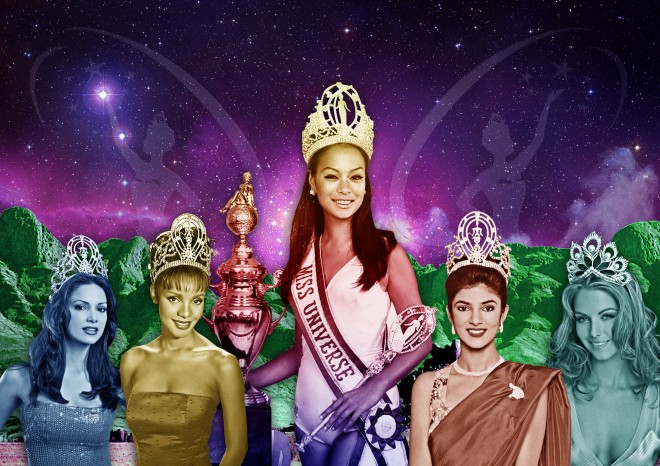
We have been a fan and follower of the Miss Universe beauty pageant since fourth grade back in 1989. In the past decade, we have noticed its decline, and can’t help but point out disturbing factors contributing to its alarming situation today.
Last year was the final straw, when Miss Universe organizers failed to stage the pageant, possibly due to the lack of a single interested host city.
There is no denying the pageant had been in trouble.
Gloomy perspective aside, our aspirations are still high.We hope Miss Universe can rise above its present challenges. After all, Filipinos regard it as its most-loved international pageant.
One would think the character and branding of such a popular event would last for eternity. But the times have seen its identity change. What troubles us is how, over the last 13 years, it has gone through three replacements of its crown—a fourth is on its way and is reportedly good until 2024.
If it ain’t broke…
Was there something wrong with the classic rhinestone crown with the slender silhouette? If it ain’t broke, why fix or change it?
“Six hundred million viewers” has long been the official worldwide viewership figure of Miss Universe. That could be particularly true under its former US network, CBS, which really produced stellar, groundbreaking editions of the pageant since its international broadcast began in 1972.
This led to a succession of exotic host cities; the pageant has been hosted by 23 countries/ territories—including the Philippines, twice.
In 2003, another network, NBC, took over, and the production changed drastically as it was bound to a template. Production quality has deteriorated, and one does not really feel the cultural vibe of the host country.
From the pageant’s regular May schedule, it gradually moved to August, September, November, and finally January this year. Probably as a consequence of these changes, viewership has declined year after year—2010 being an all-time low.
Sadly it would take a scandal or two to drum up noise for the pageant.
“I think the latest format doesn’t do the pageant a favor. If anything, it reinforces the misconception that it is a mere meat parade,” says Filipino- Australian and Miss Universe aficionado Peter Sereno. “Anyone who tries to get ahead in life through her looks is not taken seriously—and should not be. This is why most beauty queens end up in the entertainment business, because we all know no one needs brains for that.”
The pageant’s golden age, says Sereno, was in the 1990s and earlier, when the women were not just seen but also heard.
Back then, Miss Universe was an annual star-studded spectacle. Some of the notable names who became judges were world-renowned fashion designers Roberto Cavalli, Oscar de la Renta, Carolina Herrera and Hanae Mori; Vogue photographer Patrick Demarchelier; Ford Models president Eileen Ford; and boxer Evander Holyfield.
Ideal qualifications
And what were the prizes then? Every winner received a glamorous package: diamond jewelry and Swiss watches, trips around the world, a complete day-to-night wardrobe, even a Maserati.
This year, its 63rd edition. Miss Universe faces one of the toughest challenges—changing tastes. Back in the early ’50s, the advent of swimsuit campaigns brought life—and spark —to images of beauty. Hence, pageants were born.
But in the new millennium, participation and interest in Miss Universe waned, especially in Europe and developed countries, although Asia and the Americas carried on with huge and loyal fan bases.
On the ideal qualifications of a Miss Universe winner, Sereno says: “We need someone who is accessible, someone who is the embodiment of the ideal woman— a woman who celebrates not just her looks but her confidence, knowing that she has a brain to match.”
Frenchwoman Ines Ligron, national director of Miss Universe Japan until 2009, had to wait for her 10th year before she produced Japan’s second winner, and that was 48 years after its first.
Thanks to Ligron, her Miss Japan titleholders have landed Vogue Japan features, other magazine covers, and even Rolex and Uniqlo endorsements.
Sereno, meanwhile, has managed to help Australia win its second crown through guerilla training.
Why do Filipinos continue to root for Miss Universe? Is it because we obsessively seek our third crown after a 42-year drought? Is it because such pop culture pageantry is our respite from life’s harsh realities? Is it our innate love and appreciation for a Filipino woman’s beauty? Or, is it all of the above?